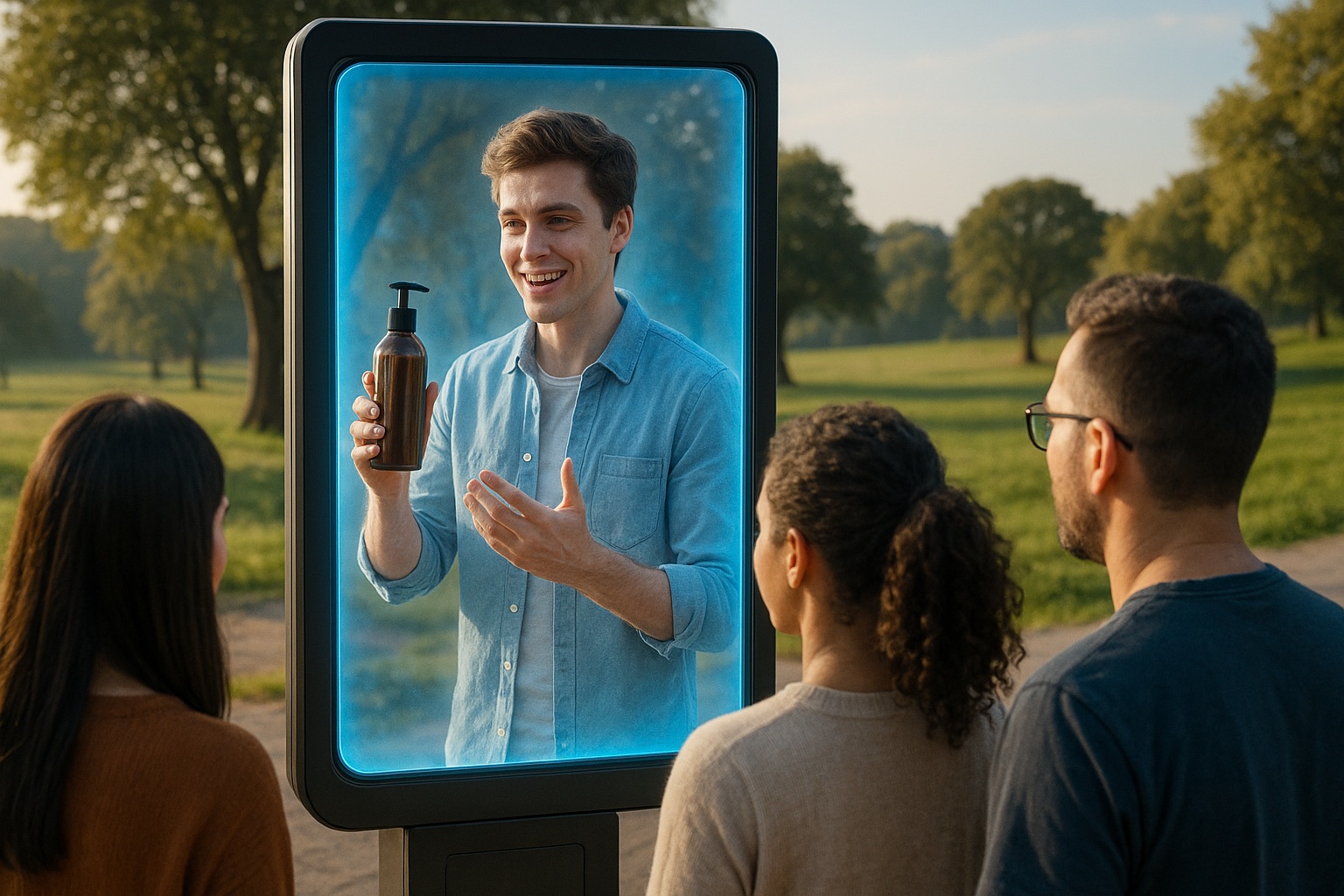In an increasingly competitive digital retail environment, businesses must offer more than static images and generic video demos to stand out. Consumers today are looking for engaging, realistic, and interactive experiences—ones that help them visualise products in their personal context before making a purchase. This is where the transformative power of Augmented Reality (AR) and volumetric video comes in, inspiring businesses to push the boundaries of user engagement.
Together, they create a transformative product experience, but to fully capitalise on their potential, brands must optimise for search engines just as carefully as for end users. This requires a tailored approach known as Volumetric Video SEO—a strategic combination of immersive media and technical search engine optimisation designed specifically for AR product pages.
This article outlines a detailed and practical roadmap to optimise your AR product pages using volumetric video SEO. By following these steps, you can be reassured that your pages will not just be engaging but also highly discoverable, fast-loading, and conversion-focused, instilling confidence in your SEO strategy.
Table of Contents
Why Volumetric Video Matters in AR Commerce
Volumetric video provides a realistic, dynamic, and fully three-dimensional representation of products. Unlike standard 360° spins or flat videos, volumetric video captures depth, scale, texture, and movement in a single frame. This results in highly immersive experiences that allow users to interact with the product from multiple angles and perspectives.
Paired with AR technology, volumetric video allows users to:
- Virtually try on wearables and accessories
- Place furniture in their actual living space
- Experience real-time product interaction with scale and lighting accuracy
These immersive experiences translate into increased user confidence, longer engagement times, and higher conversion rates.
1. Begin with Quality Volumetric Content
High-quality content is the foundation of both effective SEO and a positive user experience. If your 3D product render is poorly lit, awkwardly animated, or glitchy, no amount of SEO will fix the user’s perception.
Best practices for quality volumetric video include:
- Accurate 3D modelling: Ensure the product is represented faithfully.
- Smooth transitions and interactions: Avoid lags or stutters that can interrupt the immersive experience.
- Attention to detail: Highlight textures, materials, and unique selling features.
- Mobile responsiveness: Your content should be easily viewable across all devices.
Remember, immersive content keeps users engaged longer, which boosts dwell time—a valuable metric for SEO.
2. Conduct Keyword Research Specific to AR Experiences
AR product pages target a different user intent than traditional ones. Instead of just seeking product specs, users often search for interactive experiences. That means your keyword strategy should evolve accordingly.
Key areas to focus on:
- Intent-based keywords: Phrases like “virtual try-on glasses,” “3D sofa in my room,” or “AR shoe preview” are more likely to attract users ready to interact.
- Long-tail and contextual searches: Think of queries like “how to use AR to try furniture online” or “see product in your space.”
- Competitor analysis: Examine what AR-enabled keywords competitors rank for and identify opportunities where they fall short.
Embed these keywords naturally throughout your metadata, content, and alt tags to strengthen contextual relevance.
3. Write Optimised Titles, Descriptions, and Metadata
Your product pages need metadata that is both SEO-effective and user-friendly. This includes the page title, meta description, image alt attributes, and structured content descriptions.
- Use keywords early in the page title and ensure it includes the product name.
- Write meta descriptions that clearly explain the AR feature, such as “Try on these sunglasses in AR to see how they look on you.”
- Add alt text to preview images and thumbnails, which helps with image SEO and accessibility.
- Optimise the volumetric video description to summarise key features and interactivity available in the AR preview.
Well-crafted metadata can enhance click-through rates from search engines while providing users with confidence in what they’ll experience.
4. Structure Your Product Pages for Discoverability and Engagement
Even the most advanced AR content requires a well-structured page architecture to perform optimally. A clear and optimised structure improves both crawlability and UX.
Key structural elements include:
- The product name should be an H1 tag with a relevant keyword.
- An above-the-fold AR preview section to capture immediate interest.
- Descriptive URLs that include keywords (e.g., /3d-sneaker-try-on instead of /product1234).
- Internal links to related AR products, blog articles, or help content keep users engaged.
- Simple navigation that allows users to return to AR categories or explore similar items quickly.
This structure makes your pages easier to index while encouraging users to spend more time exploring your products.
5. Clearly Highlight AR Compatibility and Benefits
Many users may not realise that a product can be viewed in AR unless it’s explicitly stated, including indicators and CTAs that promote the AR feature, which boosts interaction rates and supports SEO through contextual content.
Tips to enhance visibility:
- Add badges or AR icons next to product titles.
- Use CTAs like “View in Your Space” or “Try It On in AR.”
- Include a short paragraph on how AR works and what devices support it.
- Mention compatibility with iOS, Android, or web-based AR tools.
These elements encourage exploration and help search engines better understand the interactive nature of your content.
6. Optimise for Mobile-First AR Performance
Given that a large portion of AR interactions occur on mobile devices, your product pages must be designed with a mobile-first mindset.
Strategies for mobile optimisation:
- Use responsive design to ensure content scales properly across all screen sizes.
- Reduce file size by using compressed 3D formats to speed up load times.
- Ensure touch gestures, such as rotate, pinch, and zoom, work smoothly.
- Avoid overwhelming users with too many animations or heavy graphics that may cause lag on older devices.
Fast, responsive AR experiences contribute to improved Core Web Vitals, which Google now considers an important ranking factor.
7. Improve Loading Times for AR Assets
Volumetric videos and 3D assets are typically heavy, and if not handled correctly, can slow down page load speeds, harming both SEO and user retention.
Here’s how to manage performance:
- Lazy-load your AR viewer so it activates only when the user scrolls to that section.
- Compress assets using industry best practices to reduce size without sacrificing visual quality.
- Utilise optimised hosting solutions, such as CDNs, to deliver content from edge servers for faster local loading.
Page speed is a critical component of SEO. Ensuring quick access to AR content not only helps ranking but also keeps users from bouncing prematurely.
8. Use Structured Data to Enhance Search Visibility
Structured data, also known as schema markup, helps search engines understand and categorise your content. By tagging your AR and volumetric video content properly, you increase the chances of appearing in rich search results.
Important schema to consider:
- Product schema to identify your core item.
- Video schema for your embedded volumetric previews.
- 3D model schema to indicate interactivity and AR capabilities.
These tags support eligibility for features like Google’s AR search carousel, video snippets, and enhanced product previews, each of which increases visibility and click-through potential.
9. Encourage User Engagement with Interactive Features
SEO is about more than algorithms; it’s also about how users behave on your site. High engagement signals to search engines that your page is valuable, which enhances its ranking potential.
Enhance interaction by:
- Placing AR content prominently where it draws immediate attention.
- Adding interactive touchpoints, like hotspots that explain product features or customisation options.
- Encouraging users to leave reviews, ratings, or even share their AR experiences on social media.
Greater interaction leads to more time spent on the page, reduced bounce rates, and richer user data—all of which are beneficial for SEO.
10. Track the Right SEO and Engagement Metrics
Once your optimised AR product pages are live, measurement becomes essential. Knowing what works (and what doesn’t) enables continuous improvement and helps you justify investments in immersive content.
Here are some of the most critical metrics to monitor:
1. AR Interaction Rate
This metric indicates how often users engage with the AR feature. A higher rate means users find the experience valuable.
- Benchmark: Aim for an interaction rate of at least 25%.
- Tools: Use analytics platforms that support event tracking (e.g., Google Analytics, Mixpanel).
2. Time on Page and Dwell Time
AR features naturally keep users engaged longer. Monitor whether your AR content is increasing this key SEO signal.
- A higher dwell time indicates higher relevance and improves rankings.
3. Largest Contentful Paint (LCP)
This Core Web Vitals metric assesses how long it takes for the largest visual element (often the AR preview) to load.
- Goal: Keep LCP under 2.5 seconds for mobile.
4. Conversion Rate and Assisted Conversions
Track whether users who engage with the AR content are more likely to convert (purchase, subscribe, or take another action).
- Use A/B testing to evaluate performance against non-AR versions of the page.
5. Organic Search Impressions
Watch for increases in visibility within search engine results pages (SERPs), particularly rich results like video snippets or product carousels.
Performance tracking ensures your SEO strategy remains aligned with business goals and user behaviours.
11. Encourage User-Generated AR Content
Today’s users are not just consumers—they’re content creators. Inviting them to share their AR product experiences creates a loop of authentic, engaging, and SEO-valuable content.
Why UGC Matters
- Builds trust through real-world usage examples
- Adds fresh, dynamic content to your site
- Encourages backlinks and social shares
- Enhances SEO with authentic keyword-rich descriptions
How to Gather and Display UGC
- Ask customers to post videos of their virtual try-ons or room visualisations using a branded hashtag.
- Feature selected user videos on product pages as testimonials.
- Offer incentives like discount codes or contests for the best UGC submissions.
This strategy not only supplements your content but also amplifies reach and social proof, both of which are powerful for organic discovery.
12. Repurpose Volumetric Assets for Multichannel Reach
Creating volumetric video content is resource-intensive. To maximise ROI, repurpose that content across multiple channels and platforms.
Tactics for Repurposing
- Extract still frames or sequences for Pinterest pins and Google Lens shopping results.
- Re-edit your volumetric video into short-form clips (TikTok, Instagram Reels, YouTube Shorts) with product tags and links.
- Use behind-the-scenes AR production clips to showcase brand innovation and attract B2B audiences or the press.
Every repurposed asset increases your online presence, builds backlinks, and improves the discoverability of your AR product pages.
13. Integrate Volumetric Video Into Broader Content Strategy
AR content should not exist in isolation. It should be part of a larger content ecosystem that builds topical authority and drives cross-channel SEO.
Create AR-Focused Topic Clusters
A topic cluster links multiple pieces of related content to a central pillar page, increasing relevance and interlinking opportunities.
Example Cluster for AR Furniture:
- Pillar: “AR Living Room Visualizer”
- Blog: “Top 5 Benefits of AR for Home Design”
- How-To: “How to Use AR to Rearrange Your Room”
- Case Study: “Customer Spotlight: Decorating with Our 3D Tools”
This strategy strengthens your domain authority and keeps users moving through your content funnel longer.
14. Host AR Live Demos and Virtual Shopping Events
Hosting interactive AR events can create buzz, drive traffic, and enhance engagement.
Event Ideas
- “AR Try-On Tuesdays” for fashion brands
- “Decorate with Us in 3D” livestreams for home brands
- Live Q&As during product launches, allowing customers to test new features in real-time
SEO Benefits
- Increase branded search volume
- Boost social sharing, creating inbound links
- Drive fresh content that search engines love
These events can later be edited into evergreen content, embedded on product pages, and optimised for search, extending their value long after they’ve ended.
15. Learn from AR SEO Success Stories
Seeing how industry leaders use AR and volumetric video, SEO can offer valuable inspiration.
IKEA
By integrating AR previews and volumetric modelling into their product pages, IKEA improved click-through rates by over 50% and increased conversions across mobile devices.
Warby Parker
Their virtual try-on feature for glasses, backed by solid technical SEO and fast-loading content, led to an increase in customer engagement and repeat visits.
Sephora
With virtual AR try-ons for makeup, Sephora reduced returns and enhanced shopper satisfaction. Their strong use of metadata and mobile optimisation supported better visibility and faster loading.
These examples underscore how strategic implementation of AR SEO leads to measurable business results.
16. Future-Proof Your AR SEO Strategy
AR technology is evolving rapidly. To maintain competitiveness, businesses must build a flexible, scalable SEO foundation that can adapt to new formats, platforms, and algorithms.
Focus Areas for the Future:
- Visual search compatibility: Optimise assets for platforms like Google Lens and Pinterest Lens.
- Voice search optimisation: Integrate natural language phrasing in AR instructions and FAQS.
- AI-powered personalisation: Combine AR with AI to deliver context-aware product previews (e.g., suggesting colours that suit a user’s space).
- Sustainability and accessibility: Ensure AR content meets accessibility guidelines and consider energy-efficient formats for greener browsing.
Future-proofing means thinking long-term, ensuring your SEO strategy can evolve along with your content, your technology, and your customers.
Recap: Volumetric Video SEO Essentials for AR Product Pages
- Create high-quality, mobile-first 3D content
- Target AR-intent keywords throughout your content
- Optimise metadata, alt text, and page structure
- Use structured data to support search visibility
- Improve loading times with compression and lazy loading
- Track performance metrics that matter
- Integrate UGC and host live AR events
- Repurpose assets across platforms for maximum reach
- Continuously evolve your strategy to match AR innovation
Final Thoughts: Build Discoverable, Immersive Experiences That Convert
Volumetric video and AR are changing the face of e-commerce, giving users the power to visualise, try, and explore products in unprecedented ways. However, even the most groundbreaking technology must be supported by a solid SEO framework to perform well.
By following the best practices outlined in this guide, you can:
- Make your AR product pages more visible to search engines
- Deliver a faster, more engaging experience to users
- Build trust and interactivity that leads to conversions
- Stay competitive in a rapidly evolving digital landscape
Immersive experiences powered by AR and volumetric video are no longer optional. They’re fast becoming the standard. And with proper SEO, they’re also a competitive advantage.






